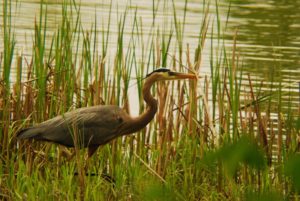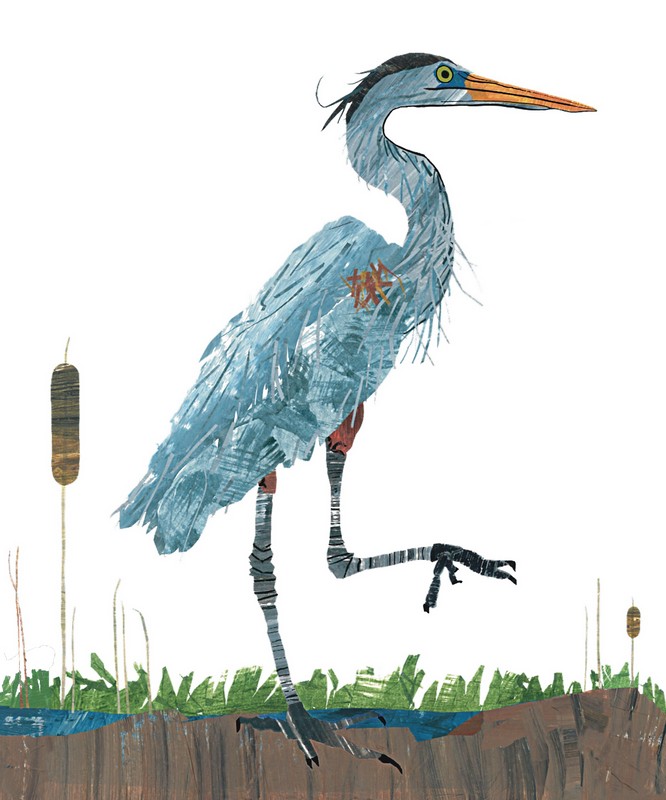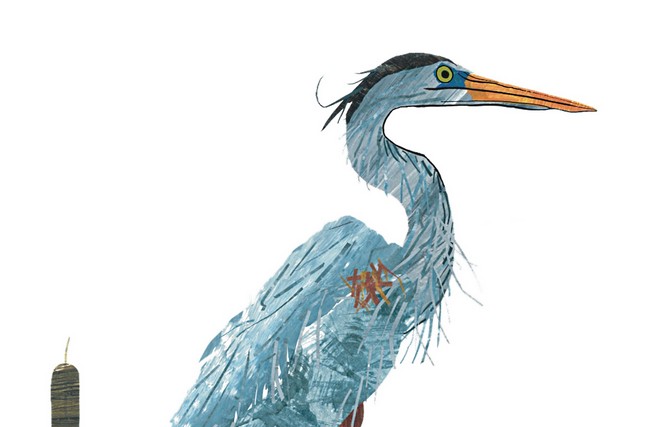Have you spotted a heron yet this year?
Claude Bégin
If you haven’t seen one yet, well, don’t despair, because these magnificent creatures like to hang around the picturesque setting along the Rideau River banks by Sandy Hill’s Strathcona Park. Near the Adàwe Crossing bridge, you will often see, if you are of the observant kind, a great blue heron standing perfectly still on its long legs, motionless, in shallow water by the banks of the river, waiting patiently to catch its prey.

Photo F. Adam Sopuck
The gangly and graceful great blue heron is the most common heron species found in Ontario water habitats. With its impressive wingspan of up to 6 or 7 feet, it stands up to 4 feet tall, but it won’t weigh more than 5 to 6 pounds. Its life expectancy can be anywhere between 5 to 15 years.
Other characteristics of this majestic bird are the long feather plumes on its head, neck, and back, its mostly greyish-blue colour, and its S-shaped long neck. Sporting its orange-yellow, dagger-like bill, the great blue heron likes to feed on frogs, fish, reptiles, crayfish, insects, and even small rodents. When disturbed, it will make a loud kraak or fraunk sound.
This species of bird nests high up in trees, building its nest with twigs and sticks. They usually nest in large colonies called heronries; however, when out hunting for a snack, they tend to fly solo. The female can lay between two and seven eggs at a time, and parents take turns incubating the eggs over the course of approximately four weeks. Chicks can be nestlings up to 75 days before flying out on their own. Herons have to be on the lookout for predators such as foxes, raccoons, eagles, hawks, and other birds of prey.
The great blue heron is the largest heron to migrate to Ontario from more southern regions; it is also one of the most common types of heron to do so. There are several other not-so-common types of migrating herons to be spotted in and around Ontario.
Here are some examples:
- The Great Egret — large white heron with long black legs. Looks somewhat similar to the great blue but with all-white plumage and a greenish area between its eyes and the base of the bill.
- Black-Crowned Night Heron — small and stocky with black head and back with a white belly and grey wings.
- Green Heron— small with long, sharp bill. Chestnut-brown head with deceivingly long neck; grey-green back with green-black cap on the head.
- Cattle Egret — a smaller version of the great egret, with a yellow bill. This species typically lives in fields, often sighted looking for ticks on the backs of cattle. The cattle egret is originally from Africa but found its way here approximately 75 years ago.
- Least Bittern — a small, hunchbacked heron with a long and pointed bill. Females are dark brown and males are dark green.
- The American Bittern — a brown-beige, medium-sized stout heron.

Illustration Claude Bégin
